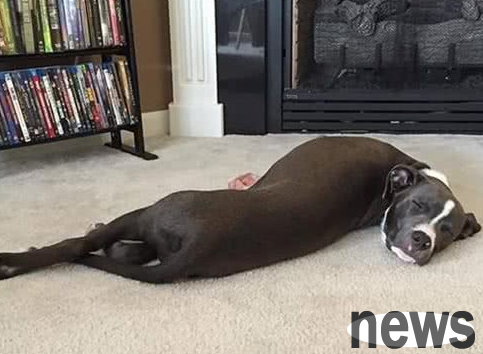Have you ever watched your dog sleep? Does it like sleeping next to you? If the sleeping posture is very relaxed, it proves that it trusts you very much. In fact, the position and posture of a dog sleeping can also reveal its mood and state. In addi...
Have you ever watched your dog sleep? Does it like sleeping next to you? If the sleeping posture is very relaxed, it proves that it trusts you very much. In fact, the position and posture of a dog sleeping can also reveal its mood and state. In addition, some sleeping behaviors of dogs can even be signs of disease.

Common dog sleeping positions and their meanings
Pay attention to where your dog sleeps most frequently. Your dog's favorite sleeping position may change depending on where they nap, who they sleep near, or whether they're feeling a certain way. Additionally, injury or pain can cause your dog to change his or her sleeping position. If the surrounding environment does not change and the dog suddenly changes its sleeping position, the owner should pay attention to the dog for signs of injury.
1. Lying on its side
A dog sleeping on its side means that it feels at home and comfortable in its environment, because such a sleeping position exposes vital organs. They also allow their limbs to move freely during sleep, so you may see more twitching and kicking. Dogs who prefer this position are generally more relatable and relaxed. But if they go to a new place or are around unfamiliar people, they may switch to a more conservative sleeping position. Just like we always feel relieved when we sleep at home, but when we yawn through transportation, we are always alert and wake up when we get the slightest movement.

2. Curl up
The most common posture when dogs sleep is to curl up into a ball, head to tail. This is a common sleeping position for animals in the wild because it protects vital organs, helps keep them warm, and allows them to stand up quickly. But this position limits movement during sleep, so the chance of them twitching is low. Dogs sleeping in this position are mostly out of distrust of the surrounding environment, but in fact, this is also a common position when the weather is cold. Some dogs also think sleeping like this makes them feel safe.

3. Lying on the ground
This sleeping position allows the dog to stand up immediately. When a dog sleeps in this position, he actually doesn’t want to miss the opportunity to participate in any activities. Perhaps we can understand that the dog is tired from playing and wants to take a nap. When the owner takes out the toy again, the dog will wake up immediately when it hears the sound and engage in a new round of play.

4. Curling up into a ball on all fours
can retain heat, while sleeping with a bare belly can help dogs cool down. Because the skin around the belly is thin and there are sweat glands on the paws, exposing these areas is a great way to beat the heat. This also shows that dogs feel very trustful and at ease with their surroundings, because they expose their most vulnerable parts, making it difficult to stand up quickly in this sleeping position.

5. Back-to-back or snuggling
You may find that your dog likes to sleep next to you, or sleep back-to-back with other pets. This means the same thing, you are very close to each other and the dog wants to be close to you. Dogs who sleep in this way will feel very happy and contented because both parties fall asleep in a relaxed posture, proving that they trust and love each other.

Amount of dog sleep
Dogs sleep longer than we do. It takes them an average of 12 to 14 hours a day to fall asleep. They usually wake up every few hours for an hour. Young and old dogs need more sleep, approximately 18-19 hours per day. But older dogs sleep longer than smaller dogs. Dogs should be aware of your dog's normal sleeping habits. If you see changes in your dog's sleep schedule, it could mean a number of things, from dietary changes to thyroid issues. If your dog sleeps for too long, he should take him to the doctor.

In addition, twitching in dogs while sleeping is often a symptom of disease. Although it is uncommon, colds may also cause convulsions in dogs. If you see abnormal convulsions in your dog while sleeping, accompanied by fever, it is a cold. In addition, excessive convulsions are often caused by epileptic seizures, and the dog owner should immediately pat the dog to wake it up. If it can wake up a dog, it is probably having a nightmare. If you can't wake up and feel that your dog is getting stiffer and stiffer, you should seek medical attention in time.

Of course, dogs will not always sleep in the same posture, and may also appear in various bold postures. But in fact, to sum up, these bold sleeping positions are all upgraded versions of the above sleeping positions. The bolder and less restrained the dog is, the less suspicious he is, and the more he trusts you.